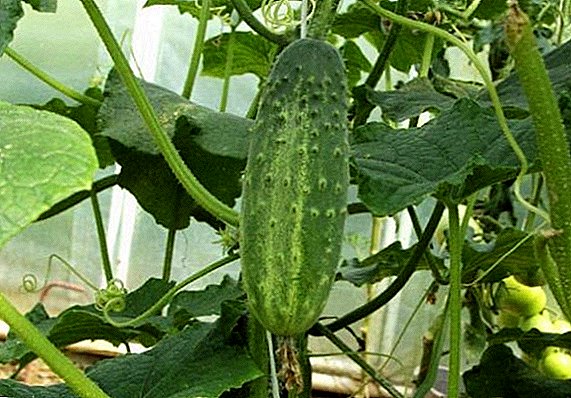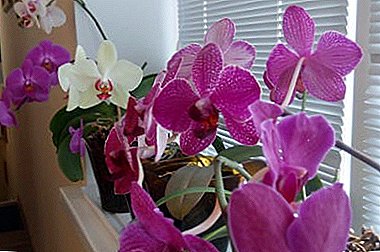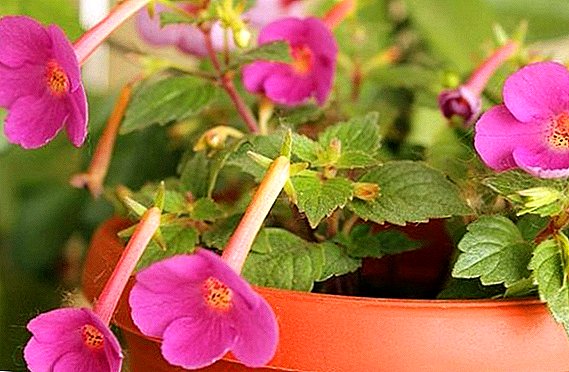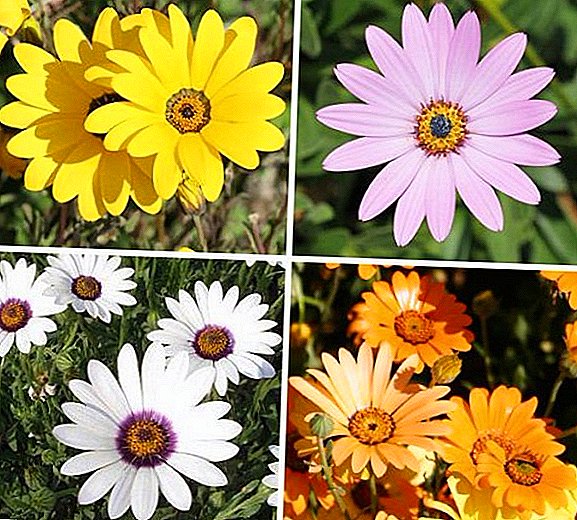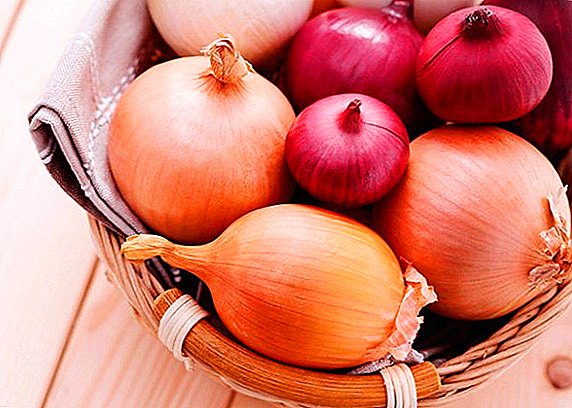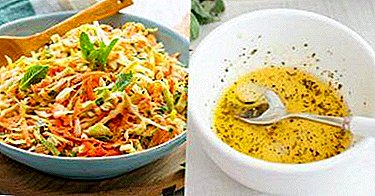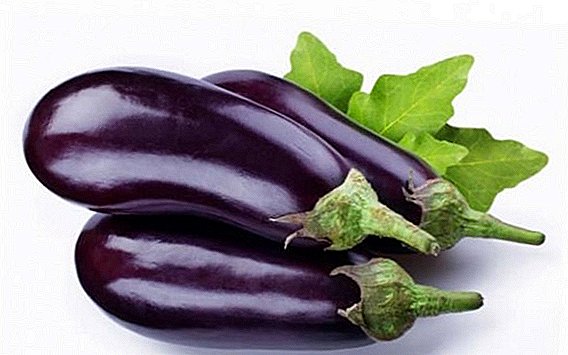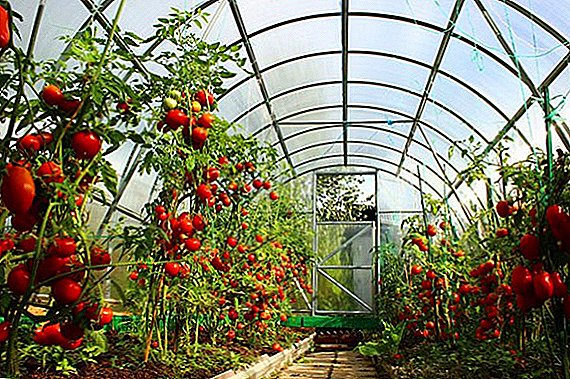 If you have your own summer cottage, then the question of growing different garden crops simply can not excite you. The main problem is often the choice of a specific place of growth of the same cucumbers or tomatoes, because you can grow them both in open ground (in the garden) and in a polycarbonate greenhouse. By the way, many gardeners are inclined to the last option, because with proper care, the chance of getting a good harvest is slightly higher. Let's consider the features of growing tomatoes in the most modern version of the greenhouse - a polycarbonate structure and find out whether it is as profitable as it seems at first glance.
If you have your own summer cottage, then the question of growing different garden crops simply can not excite you. The main problem is often the choice of a specific place of growth of the same cucumbers or tomatoes, because you can grow them both in open ground (in the garden) and in a polycarbonate greenhouse. By the way, many gardeners are inclined to the last option, because with proper care, the chance of getting a good harvest is slightly higher. Let's consider the features of growing tomatoes in the most modern version of the greenhouse - a polycarbonate structure and find out whether it is as profitable as it seems at first glance.
How to choose a grade
Of course, it is necessary to start planting any crop by choosing the most appropriate variety, not only from the point of view of the taste characteristics of the fruit, but also on the basis of the requirements of the plants in cultivation issues.
So, not all varieties are suitable for growing in conditions of high humidity and temperature, therefore, if you decide to grow tomatoes in a greenhouse made of polycarbonate, then it is better to give preference to hybrid varieties, since they are more resistant to pests and diseases.

Modern experienced gardeners already know all such options as a keepsake, however for beginners The list of varieties can be very useful:
- "Samara" - a variety intended for cultivation in greenhouses and different juiciness and sweetness of the fruit. 3.5-4.0 kg of fruits are usually harvested from one bush, although when planting no more than three bushes per 1 m², the yield rises to 11.5-13.0 kg from one plant.
- “The Miracle of the Earth” is one of the most popular varieties among summer residents, with richly pink fruits of medium ripening period. In one brush up to 15 pieces of tomatoes, weighing about 300 g each.
- "Honey drop" - bulk and very sweet variety that feels great in greenhouse conditions.
- "Moneymaker" - an early ripe and very fruitful variety, with rounded red fruits collected in brushes of 7-12 pieces. Up to 9 kg of crop can be harvested from a single plant.
- "Long Keeper" - unripe fruits of pale milky color, and at full maturity they acquire a pink-pearl color. From one bush they collect from 4 to 6 kg of fruits.
- "Dina" is a fertile cultivar for growing in a greenhouse that allows you to harvest up to 4.5 kg of crop from one bush.
- “Bull's heart” is a strong-growing shrub, reaching 170 cm in height. With the condition of cultivation in a closed soil, up to 12 kg of not only red, but also yellow or even blackish tomatoes can be harvested from one plant.
- "Marfa" - elastic fleshy fruit, very pleasant to taste. From one meter square collect up to 20 kg of a crop.
- "Typhoon" - round fruits ripening on the 80-90th day after planting. Up to 9 kg can be collected from 1 m².

It is these varieties that are easiest to find in the greenhouses of modern summer residents, however, when planting seedlings in closed ground, it is necessary to take into account the most suitable time for this procedure. Some varieties are particularly sensitive to this nuance.
Did you know? The name of the fruit of the described plant comes from the Latin word "pomo d'oro", which translates as "golden apple". The second name came from the French "tomate", the French, in turn, slightly modified the name of the fruit, used by the Aztecs ("tomato").
Features of growing
If you want to know how to grow a good crop of tomatoes in the greenhouse, then "close your eyes" to the basic requirements of the crop to light, temperature and soil composition is simply unacceptable.
Air temperature and humidity
The most favorable temperature for growing tomatoes is the range from +22 ° C to +25 ° C during the daytime and + 16 ... +18 ° C - at night. If the air temperature in a polycarbonate greenhouse rises to +29 ° C or even higher, you risk completely without harvest (pollen will become sterile, and the flowers will just fall down on the ground). However, the night cooling (even up to +3 ° C) most varieties endure very resistant.
As for the indicators of humidity, then for tomatoes it should be within 60%, since increasing this value will lead to quick cracking of the fruit.
Lighting
Tomatoes are light-loving plants that feel great when they have a long light day. However, at the same time, it is important not to overdo the illumination for this culture, because with an excess of light, instead of drawing fruit, the number of leaves between inflorescences will simply increase significantly.
In the greenhouse you can also grow cucumbers, bell peppers, eggplants, strawberries.
The soil
Soil for growing tomatoes should be loosened and nutritiousso that the plants could with full force enter into active fruiting. If loamy soils predominate in your greenhouse, they should be improved by adding 1 bucket of humus, as well as sawdust and peat, per 1 m².
If there is a large amount of peat in the composition of the substrate, the soil can be lightened by adding 1 m² of sod land, small chips and humus, 1 bucket each. Also, coarse sand (0.5 buckets per 1 m²) will not be out of place. For active plant growth, it is useful to immediately add other fertilizers, for example, potassium sulfate (2 tablespoons) and superphosphate (1 tablespoon), and then dig up the greenhouse area.
Immediately before planting seedlings will be required carry out soil disinfectionwhich is performed using a weak, barely pink solution of potassium permanganate. The preparation of such a disinfector occurs by diluting 1 g of a pharmacy substance in 10 liters of water (its temperature should be about +60 ºС).
Greenhouse beds for tomatoes are usually slightly higher than the ground surface level (about 20-40 cm), since the ground elevated above the ground warms up more qualitatively, and in a shorter period of time. The height of the location depends on the possibility of filling the bed with a suitable soil mixture, as well as on the owner's physical ability to constantly handle it in a bent position.
The greenhouse must be fully prepared for the settlement of tomato seedlings 5 days before planting. Given this fact, it is necessary to choose the methods of its cleaning and the timing of the breakdown of the beds.
Landing rules
There are several simple rules for planting tomato seedlings in closed ground, however, it is important not only to know how to plant and grow tomatoes in the greenhouse, but also when exactly to switch to planting them there. Let's tell about everything in order.
Timing
Seedlings of tomatoes, which previously grew in pots, are planted in a greenhouse with the appearance of 3-4 leaves. Before performing this task, they need to be prepared in advance for the conditions for further growth, gradually reducing the temperature, and then putting them out along with the boxes next to the greenhouses. After standing there for several days, the seedlings will be fully prepared for planting.
The life cycle of tomatoes varies from 110-130 days, which depends on the individual characteristics of a particular variety. For the culture to have time to go through all the stages of its life journey, it is planted in the greenhouse early enough.
If you live in the middle zone areas, then this period is at the beginning - the middle of Mayso that by the twenties of the month the seedlings have already managed to settle well in a new place. As for the northern regions, then the landing dates will undoubtedly move, depending on the specific climatic conditions.
Preparation of planting material
We familiarized with the first stage of growing tomatoes in a polycarbonate greenhouse, now it remains to find out how to prepare the planting material - seedlings. The easiest way is to buy already grown seedlings, which will save you time and effort, but you can never be completely sure that all the rules and requirements for growing such seedlings are observed.
In addition, as we already know, not all varieties of tomatoes successfully take root in greenhouse conditions, and those that are ideally suited for these purposes are not always available on the market. The only correct option in this case would be the independent cultivation of seedlings, especially since the technology of this process is no different from preparing seedlings for open ground.

Important! In addition to hybrids, determinant tomatoes can be used for growing in a polycarbonate greenhouse, which reach 0.7-1.5 m in height and stop growing with a set of 6-8 ovaries.Seeds of hybrid varieties do not need pre-soaking, germination or hardening, and their forcing is done as follows: we prepare plastic bags, small boxes or boxes with holes for water drainage (the height of the planting container should be about 7 cm) and, filling them with a nutrient substrate, we put seeds into it (it is impossible to sow different varieties of tomato in one container).
In modern stores, it is increasingly common to find tomato seeds that have already been successfully pre-sowed, as evidenced by the brightly colored seeds painted by the manufacturer.
If there are no marks on the packaging of the selected grade, indicating the type of seed preparation, and they are of a completely natural color, then all preparatory measures (calibration, dressing, processing with stimulants, germination test and germination) should be carried out independently. In addition, many gardeners add to this list and a few additional procedures: stratification and bubbling.
Those seeds that successfully pass through all the indicated stages are planted in a box, where they will be for the next 30 days, that is, before the appearance of 2-3 leaves. During this time, they are watered three times (the seedlings should not be allowed to stretch too much): immediately after planting, when the seedlings hatch and 1-2 weeks after that. The ground should be wet, but not waterlogged.

The optimal length of the sapling before planting is 25-30 cm, and your task is to timely distill the plants at the time of their "resettlement" in greenhouse conditions. In order to restrain the growth of the stem to this point, plants with leaflets are planted again in separate containers, since the root system of the plants can develop more actively in a larger pot.
Picked up in separate pots seedlings need to be watered every week, and by the time of the next watering the soil should dry out well. 12 days after transplantation, together with watering, small tomatoes should be fed, adding 10 tablespoons of azofoska and nitrophoska to 10 liters of water.
For each sprout there is half a cup of such nutritional composition. After 15 days, young plants can be fed with ready-made formulations (for example, “Fertility” or “Senor Tomato”, and pale green seedlings with “Ideal”). Properly completing all these steps, you will get an excellent planting material, which will take root in greenhouse conditions without any problems and will soon give a good harvest.
Technology
As in the open field, planting tomatoes in a greenhouse has its own pattern of plant placement. Most often the beds are made along, no more than 60-90 cm wide. A 60-70 cm wide passage should remain between the rows. Early ripened undersized varieties that form 2-3 stems, land in a staggered 2 rows, with 55- 60 cm between them and 35-40 cm between adjacent tomatoes.
Standard and determinant tomatoes with only 1 stem can be planted thicker (distance between rows 45-50 cm, between neighboring plants 35-40 cm).

Important! In any case, do not allow thickening, since growing strong and tall tomato saplings, even in a polycarbonate greenhouse, will be quite problematic.Tall tomatoes are planted in a checkerboard pattern, keeping the distance between rows of 75-80 cm, and between plants - 60-70 cm.
Young sprouts are planted only in heated soil with a temperature of + 12 ... +15 ° С. To achieve this result, the substrate is covered with black film in advance, although as an alternative you can heat the water and pour it into the wells just before the planting itself.
When planting seedlings do not push them too far into the ground, otherwise the soil sprinkled with soil will start new roots, and the growth of the tomato will stop. Do not get carried away and nitrogen-containing fertilizers, because placed in the wells in large quantities of fresh manure or chicken droppings will lead to the forcing of the tops, instead of the plant used all the power to form fruits.
Preparing the beds, you can proceed to the seedlings, the process of which occurs in the following sequence:
- tearing off at the seedlings 2-3 lower leaflets;
- overturn the container with the plant and, tapping lightly, release the container from it;
- the root system of the seedling should have retained the shape of the pot, so we install it into the soil so that the seed leaves are above the surface;
- we fill the free space in the hole with earth rolled back during their formation and, having slightly tamped up the soil with the hand, we leave the plants to take root.
The first watering should be carried out not earlier than in 10-12 days, and it is not necessary to hurry with it, so that the stems do not drastically stretch.
How to care for tomatoes
Tomatoes are not very capricious plants, however, if you want to get a bountiful harvest, then you should not forget about some rules of their cultivation. The whole process of care can be divided into two periods: the care of the seedlings and adult plants. Let's look at each of the options more closely.
For seedlings
As soon as you move your seedlings to a closed ground, you need give them time to settle down in a new place (at least 10 days), because if this process is not successful, then there will be no sense to grow tomatoes in the future (this applies to both greenhouses made of polycarbonate and open soil).
Experienced growers recommend not to water the tomatoes in the first days after planting, but to postpone this process until the plants take root well. In the future, the most suitable option for irrigation will be water with a temperature of + 20 ... +22 ° C, used before the flowering phase with a frequency of 1 every 4-5 days.
For 1 m² of plantings you will need about 4-5 liters of water, and during flowering its amount is adjusted to 10-13 liters per 1 m². Best to perform watering plants at the root in the morning, as in the evening in the greenhouse condensate will form, drops of which can harm the leaves of tomatoes.
Do not forget to pay attention to the mode of ventilation, which is also important in the adaptation of young plants. The main thing is to constantly maintain the optimum temperature and humidity in the greenhouse, and tomatoes are not afraid of drafts. Airing can be carried out in the most convenient way for you: open the side and top window leaves or ends, leave the door for several hours, but the main thing is that the procedure should be carried out two hours after watering.
On the 3-4th day after planting, the obligatory garter of the plants is performed, which is simply necessary so that they do not break under the weight of their weight. In this question the main condition - the use of tissue that does not injure the stem of the tomatoes (in the greenhouse conditions for the garter used frame or linear tapestries).
10-15 days after planting the seedlings in the greenhouse, its first feeding is carried out. To prepare a nutrient solution in 10 liters of water, dilute 0.5 liters of mullein with 1 tablespoon of nitrophoska, calculating the amount of the prepared solution so that each plant has 1 liter of the mixture. A second top dressing of tomatoes in the greenhouse is performed after 10 days using 1 tsp of potassium sulfate per 10 liters of water. For one season you need to do 3-4 of such feeding.

For adult plants
When the plant grows a little and begins to prepare for active fruiting, the temperature in the greenhouse should be at a level of up to +25 ° C, with night lows up to + 15 ... +16 ° C. The ideal temperature conditions for fertilization of a tomato flower are + 23 ... +32 ° C, and if this value falls below +15 ° C, then you will not wait for flowering.
Too high a temperature is detrimental for the plant itself, since the processes of photosynthesis are inhibited and pollen grains do not germinate. As for young seedlings, adult plants need regular watering and ventilation, which, by the way, is an excellent prevention of various diseases.
Requirements for these procedures are almost the same as in the first time after transplantation of seedlings, except that in the presence of modern drip irrigation irrigation will be carried out using such systems. It is combined with plant dressings and does not cause soil moisture or stagnant water, which significantly reduces the risk of fungal diseases.
Тепличным помидорам жизненно необходимы азотосодержащие, фосфорсодержащие и калийные удобрения, а также микроэлементы магний ("Калимагнезия"), бор ("Борная кислота"), марганец и цинк, которые несложно найти в специализированных магазинах в составах различных удобрений. В таких случаях на упаковках обозначаются рекомендуемые дозировки. Через 12 дней после посадки почву также удобряют смесью из 1 столовой ложки суперфосфата и 2 столовых ложек золы.

Diseases and pests
If you have clean soil and high-quality seedlings, then when growing tomatoes in greenhouse conditions there should be no problems, because pests and diseases have nothing to do next to such plants. Nevertheless, it is not always possible to completely rid tomatoes of their presence.
The most common pests are wireworms, bears and whiteflies, and among the popular ailments there are different types of rot, late blight and cracking of fruits, although as regards the latter, it has already been proven that this is due to a sharp increase in soil moisture. It is not uncommon when, after complete drying of the land, the beds are abundantly watered, which leads to this phenomenon, therefore it is so important to observe regularity in irrigation.
The following fungicides are used to protect tomatoes from diseases: Skor, Kvadris, Poliram, Ridomil Gold, Strobe, Acrobat MC, Thanos. Against pests - "Angio", "Aktara", "On the spot", "Commander", "Calypso", "Fastak".
Let us give examples of several effective ways to control pests and diseases of greenhouse tomatoes. So, you can get rid of a bear by using the infusion of hot pepper, for the preparation of which for 10 liters of water you need to take 2 cups of vinegar and 150 grams of hot pepper, and then pour 0.5 liters of solution into each of the minks.
Caterpillars scoops most effective to destroy by mechanical means, that is, the method of manual collection, digging the soil and the destruction of weeds. Complying with the agrotechnical requirements, as well as spraying the plants with a solution of copper oxychloride per 30 g of the substance per 10 liters of water will help in the fight against the above diseases.

Harvesting
As soon as the fruits of tomatoes reach the stage of their full maturity, they need to be collected every day. Tomatoes are best removed from the bushes still pink, as red tomatoes will accelerate the ripening of the entire brush. The fruit stems from the tomatoes are immediately torn off, and the fruits themselves are placed in clean boxes in tiers: the bottom is less ripe, and the top is saturated red.
Did you know? Tomatoes contain the so-called "hormone of happiness", which allows you to improve your mood even on the most overcast day.
Greenhouse or open ground?
Undoubtedly, both tomato placement options have their advantages and disadvantages: therefore, it may be difficult to choose the most suitable one for you. In greenhouse conditions, you can grow tomatoes all year round, especially if such facilities are equipped with special heaters, however, you will have to spend a lot of time on the seedlings in season.
Shelters will be able to protect seedlings from returnable frosts or prolonged rains that can destroy the seedlings planted in open ground.

When growing tomatoes in open soil, plants are less protected from attacks by pests and other negative factors, but at the same time you do not have to spend money and energy on the construction of greenhouses and their further maintenance. That is, if you do not want to grow early varieties of tomatoes or engage in their mass production, then the space allocated for planting tomatoes will be more than enough.



